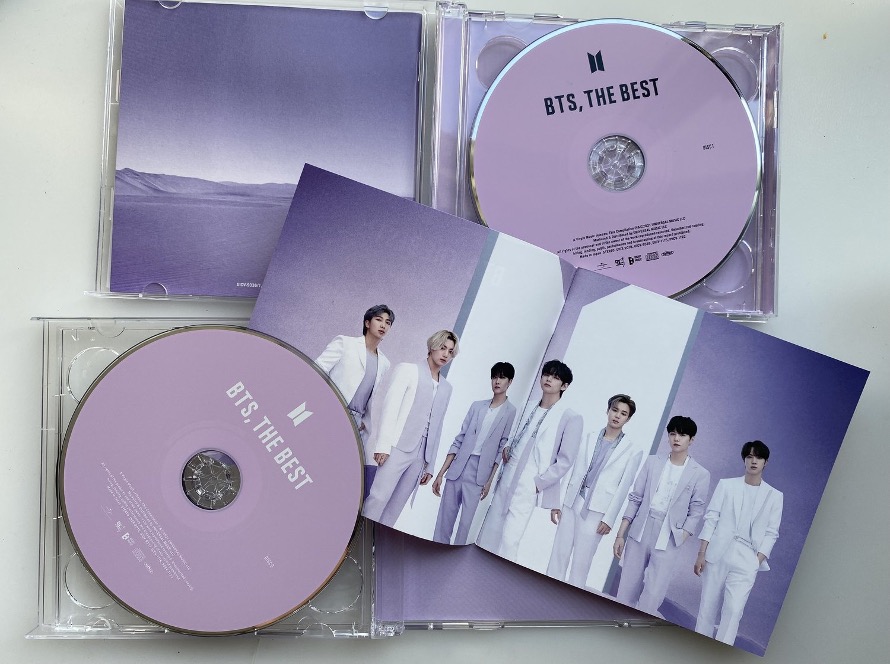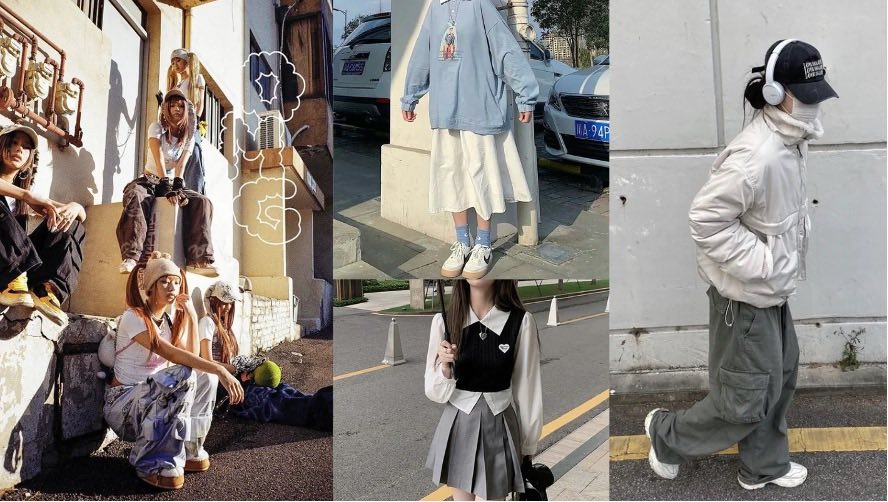The global rise of K-pop and K-drama isn’t just a cultural wave, it’s an economic force reshaping the landscape of South Korea. Even if you’ve never found yourself caught in the catchy rhythms of K-pop or immersed in the plot twists of a K-drama, chances are you might have at least stumbled upon the global phenomena that are BTS, Blackpink, the Korean thriller- “Squid Game”, or even the unforgettable “Gangnam Style” craze back in 2012. These cultural sensations are not just forms of entertainment, they’re at the forefront of what the world has come to recognise as the “Hallyu” aka “Korean Wave.” Beyond these melodies and binge-worthy dramas lies a captivating economic story, where the Korean Wave has turned into a powerful force, reshaping industries and leaving an enduring impact on the South Korean economy.

From shaping tourism trends to sparking a language-learning craze, influencing global taste buds with the delicious offerings of Korean cuisine, earning global recognition for Korean beauty and skincare expertise, and setting new trends in fashion – the impact of these entertainment phenomena reaches into unexpected corners, leaving a lasting imprint on the nation’s economy.
Let’s unravel the intriguing economic contributions behind the scenes of K-pop and K-drama.
Music Sales and Streaming Platforms
K-pop music is a major source of income for the South Korean music industry, coming in from album sales, digital downloads, and streaming services, among other sources. Technological improvements caused the music industry to shift from analogue to digital, which in turn caused consumer behaviour to change. Music enthusiasts stopped collecting physical records and began acquiring digital files instead. With the launch of online music streaming services like Melon as early as 2004, ahead of platforms like Spotify, South Korea was notably at the forefront of this shift. Another example of the industry’s flexibility was the creation of official YouTube channels to facilitate effective song promotion.
Surprisingly, they also have a booming physical CD industry in the nation, which also offers supplementary collectables like photocards and photoshoots, encouraging fans from around the world to make significant albums and single sales.

With 13 streaming services available, such as Melon, Spotify, and YouTube Music, etc., Melon and Genie, two local platforms catering to the country’s strong preference for K-pop and fostering local artists’ development, dominate the South Korean music streaming market. South Korea is a digitally native country where music is easily accessible. This dynamic fusion of digital and physical consumption feeds the global industry’s growth while supporting artists, businesses, and stakeholders.
With an impressive $6.5 billion in revenue, South Korea is the third-biggest music market in Asia and the seventh-largest worldwide, according to the IFPI Global Music Report as of 2022. It is predicted that South Korea’s music streaming sector will generate US$0.65 billion in revenue by 2024. Revenue from music downloads is expected to increase significantly in South Korea, reaching US$25.10 million by 2024.
Concerts and Tours
K-pop artists draw large crowds from around the world on their international tours, which generates income for the entertainment business through ticket sales and merchandise sales. Listed in the top eight K-Pop world tours with the highest cumulative revenues between 2022 and 2023, the total earnings surpassed an astounding $400 million. Notably, BLACKPINK was at the forefront, having surpassed the $150 million milestone with their massive, BORN PINK tour spanned across multiple continents.
Moreover, HYBE Co., representing BTS and Seventeen, brought in a global tour revenue of 250 billion won ($190 million). As the only South Korean company to make it into the top 10 promoters, HYBE ranked fifth worldwide for global tour revenue in 2023, with a total revenue of $188 million, according to Billboard statistics. During the past year, artists associated with HYBE performed 93 concerts across the globe, attracting an audience of 1.6 million people.
Advertising and Marketing
K-pop and K-dramas have a significant impact on the advertising and marketing industry since idols are increasingly sought-after to represent major brands. The rising popularity of K-pop idols draws younger consumers and improves brand visibility due to their devoted fan base. Cross-marketing affiliations involving K-pop and K-dramas boost South Korean artists’ and entertainment businesses’ international exposure, which in turn boosts the country’s economic growth.
Collaborating with domestic brands also generates a favourable effect. Brands from South Korea become more visible and appealing nationally as well as internationally when K-pop and K-drama celebrities promote domestic products. Thus, local firms are supported and domestic consumption is stimulated. For instance, Samsung is a domestic brand and an obvious product in K-dramas is a Samsung smartphone which is just impossible to miss.

Job Creation
The rise of the Korean culture has also greatly aided in the creation of jobs. It was anticipated that between 2017 and 2021, the Korean cultural wave generated 160,000 new employment altogether. This corresponds to a 19.6% increase in Korea’s overall employment rate in 2022.
Tourism and Destination Marketing
K-dramas and K-pop are strong forces of increased tourism in South Korea. Fans are drawn to travel to well-known tourist places by K-dramas’ captivating depictions of stunning locations and cultural diversity. Furthermore, the attraction created by K-pop concerts, fan gatherings, and partnerships with tourism boards attracts fans from all over the world, influencing their travel plans.
Additionally, funding has been set aside for the establishment of Hallyu agencies, which fall under the purview of South Korea’s Ministry of Culture, Sports, and Tourism. These agencies’ main goal is to promote tourism based on Korean culture and K-Drama locations, like movie and television sets as major tourist destinations. South Korea received about 3.2 million foreign tourists in 2022.
Korean Beauty, Skincare and Fashion Trends
In addition to influencing consumer preferences, the increasing demand for Korean beauty, fashion, and food trends is also promoting economic growth and elevating South Korea’s standing as a global trendsetter.
Everyone around the world is fascinated with Korean skincare and cosmetics products. People are enamoured with getting the “Glass Skin” look, which is often seen in K-dramas. In addition, South Korea is the fourth-biggest supplier of cosmetics worldwide. According to GlobalData, the Korean beauty market is among the top 10 worldwide beauty markets, with a projected value of USD 21.8 billion by 2026.
As K-pop and Korean dramas gain popularity, styles are becoming more noticeable, and the rate at which fashion becomes popular is incredibly quick. Among the numerous characteristics that make Korean design unique and modest, and hence appealing to a large audience, are minimalism, layering, unisex styles, and oversized looks. South Korea exported over 915.5 million dollars worth of clothing accessories and knitted or crocheted items in 2022. This turns into an additional factor in boosting the economy.

K-Food Popularity
Sales of K-food have had an upward trajectory worldwide. The Food Institute research shows that in the 12 months preceding January 2022, interest in Korean cuisine increased by about 90% and that this growing trend in Korean restaurant concepts is anticipated to continue for a while to come. Over the last ten years, food exports from Korea have increased by 10% annually. 2020 saw an extraordinary increase in South Korea’s instant noodle exports, propelling the country to the top of the world market for instant noodles.

Other Economic Contributors
K-pop and K-dramas have led to significant cultural diplomacy, shaping a favourable global perception, and promoting economic collaborations, trade partnerships, and international relations. At the same time, their exports have surged over the years which encompasses technology, beauty, fashion, entertainment and more contributing significantly to economic expansion. Global fascination is heightened by the pervasive presence on social media platforms, and the demand for learning the Korean language is rising due to the world’s fondness for Korean culture. The dynamic and mutually reinforcing relationship that results from this interaction makes South Korea a global cultural and economic force.
To Conclude
In the dynamic world of Korean entertainment, diverse opinions exist – some perceive it as a K-bubble, others question its cult-like devotion, while others wholeheartedly embrace the K-craze, immersed in fascination. Despite these varied perspectives, one undeniable truth prevails: the authenticity of this phenomenon has transformed into a formidable force, propelling the Korean economy to unprecedented heights. The ripple effect initiated by K-pop and K-drama has given rise to K-beauty, K-fashion, K-food, and ultimately, a K-everything culture. This widespread pop culture has not only captivated global audiences but has also enabled the South Korean economy to monetize its cultural richness, reaching new levels of economic success.
Written by – Saba Godiwala
Edited by – Saba Godiwala
